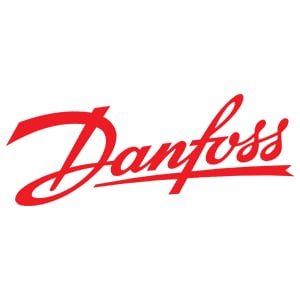
DANFOSS A/S
thermostatic radiator valves go into series production.
Global Presence: in 1949
Setting a course for sustainability
- Description
Our key expertise lies in food refrigeration, air conditioning systems, controls for electric motors, heating systems for buildings, hydraulic systems and components for powering mobile machinery, and components for renewable energy, including solar and wind energy.
• COMPANY HISTORY :
Our journey to Engineering Tomorrow began on September 1, 1933, when Mads Clausen founded Danfoss in his parents’ farmhouse in Nordborg, Denmark. Since then, the business has grown from a solo enterprise into one of the world’s leading suppliers of innovative and energy-efficient solutions.
Passion for innovative customer solutions has been ingrained at Danfoss since Mads Clausen’s very first inventions. From the thermostatic expansion valve for refrigeration systems, to one of the world’s first radiator thermostats for regulating heating, to the world’s first mass-produced frequency converters, all the way to today’s telematics used for precision farming. Explore our timeline and key highlights from different decades below.
1930s: One man’s passion sparks global innovation
Milestones: Mads Clausen sets up his own company, “Dansk Køleautomatik og Apparatfabrik” in 1933.
Key innovations: First thermostatic expansion valves – water valves, thermostats, pressure switches, filter driers and more.
Global Presence: First partnership established with distributor Itho-Schiedam in the Netherlands.
The team: 26 people employed by 1939.
1940s: Building a business and an international presence
Milestones: Exports exceed 30% in 1941 and the company is renamed Danfoss in 1946.
Key innovations: Radiator thermostat prototyped as one of the first in the world. Controls and nozzles for oil burners introduced.
Global Presence: In 1949, the first sales company set up in Argentina.
The team: By Danfoss’ 10th anniversary, Danfoss employs 179 people.
1950s: Optimizing production and forging a global network
Milestones: In its first year of production, Danfoss sells 5,000 Danfoss compressors – 10% of company sales turnover alone.
Key innovations: Thermostatic radiator valves go into series production. An early digital milestone is reached when Danfoss gets its own punch-card department.
Global Presence: Agents from 21 countries meet for the `Danfoss Convention 1950´ in Nordborg.
The team: 3,000 employees celebrate Danfoss’ 25th anniversary in 1958.
1960s: The death of the founder heralds the birth of a legacy
Milestones: Mads Clausen dies in 1966 – but his legacy lives with 305 patent applications being filed between 1965-69. In 1961 Danfoss purchases the first EDP system and in 1969 installs the biggest computer in Danish industry. The 3,000,000th Compressor leaves the factory, manufacturing of hydraulic components begins (licenses from Char-Lynn). Danfoss moves into newly constructed headquarters in 1962 – Until then, Mads Clausen had run a company with over 5,000 employees from his childhood room in an old farmhouse.
The team: Mads Clausen’s widow, Bitten becomes chair of the board.
1970s: Energy efficiency in focus
Milestones: A test field for hydraulics is established in Nordborg and the company’s first electron-scanning microscope is put to use. The hydraulic motor ORT wins the ‘IF 75’ Design Award
Key innovations: Oil pre-heaters are launched and in 1974, VLT® frequency converters control the transfer lines at Audi. SONOFLO® ultrasonic flowmeters are introduced.
The team: By 1977 there are over 11,000 employees: 7,800 in Denmark and 3,400 around the world.
1980s: Leading the way in the computer age
Milestones: Computer-aided design (CAD) is put into use in 1982 and in 1986 electronics represent 10% of sales. A waste water neutralization plant in Nordborg opens in 1985; later Danfoss wins the `Excellent Environment Administration´ award. In 1989, Danfoss produces 100 million compressors.
Key innovations: The ECT weather compensation control panel and ADAP-KOOL® control system are introduced.
The team: In 1986 Danfoss has 13,285 employees, including 9,275 in Denmark.
1990s: Setting a course for sustainability
Milestones: Danish factories achieve ISO 9001 quality certification and Danfoss signs ICC’s international declaration of sustainable development. More than 1,000 PCs are installed in 1990. Danfoss acquires Maneurop Compressors in 1990. Factories are established in Russia (1993) and China (1996).
Key innovations: Nessie® Water Hydraulics called `The Innovation of the Century’. EVITA® Oxygen Meters are launched.
The team: By 1999, Danfoss employs almost 19,000 people.
2000s: Expanding the Danfoss family
Milestones: Danfoss Fluid Power A/S merges with Sauer Inc. to become Sauer-Danfoss Inc. Production starts in India and Brazil. Danfoss joins the UN Global Compact. Danfoss acquires several heating technology companies, including DEVI, Thermia and LPM. A survey puts Danfoss among the world’s most ethical companies.
The team: By 2008, Danfoss has almost 32,000 employees.
2010s: Engineering Tomorrow, today
Milestones: Danfoss and Saue
- Gallery
- Videos
- Articles
Korozo Group and Borealis collaborate to create laundry detergent packaging that is designed to be recycled
Henkel’s laundry detergents are now being sold in packaging produced by Korozo Group (Korozo) that is designed to be recycled and constructed with the European Packaging and Packaging Waste Regulations (PPWR) in mind. This project has seen the creation of mono-material films that initially feature 30% PCR. The PCR content was supplied by Ecoplast, a
FACHPACK 2024: Nuremberg plays host to Europe’s packaging industry
From 24 to 26 September 2024, the European packaging sector will once again gather at FACHPACK, the trade fair for packaging, technology and processes. The more than 1,400 exhibitors at Exhibition Centre Nuremberg will showcase packaging materials and accessories, packaging machines and technology as well as the key processes for automation, marking and labelling, packaging printing
- Informations
- Related Advertisers
- Categories
- Tags
- Contact the editorial staff of PACKAGING INTERNATIONAL for more info
